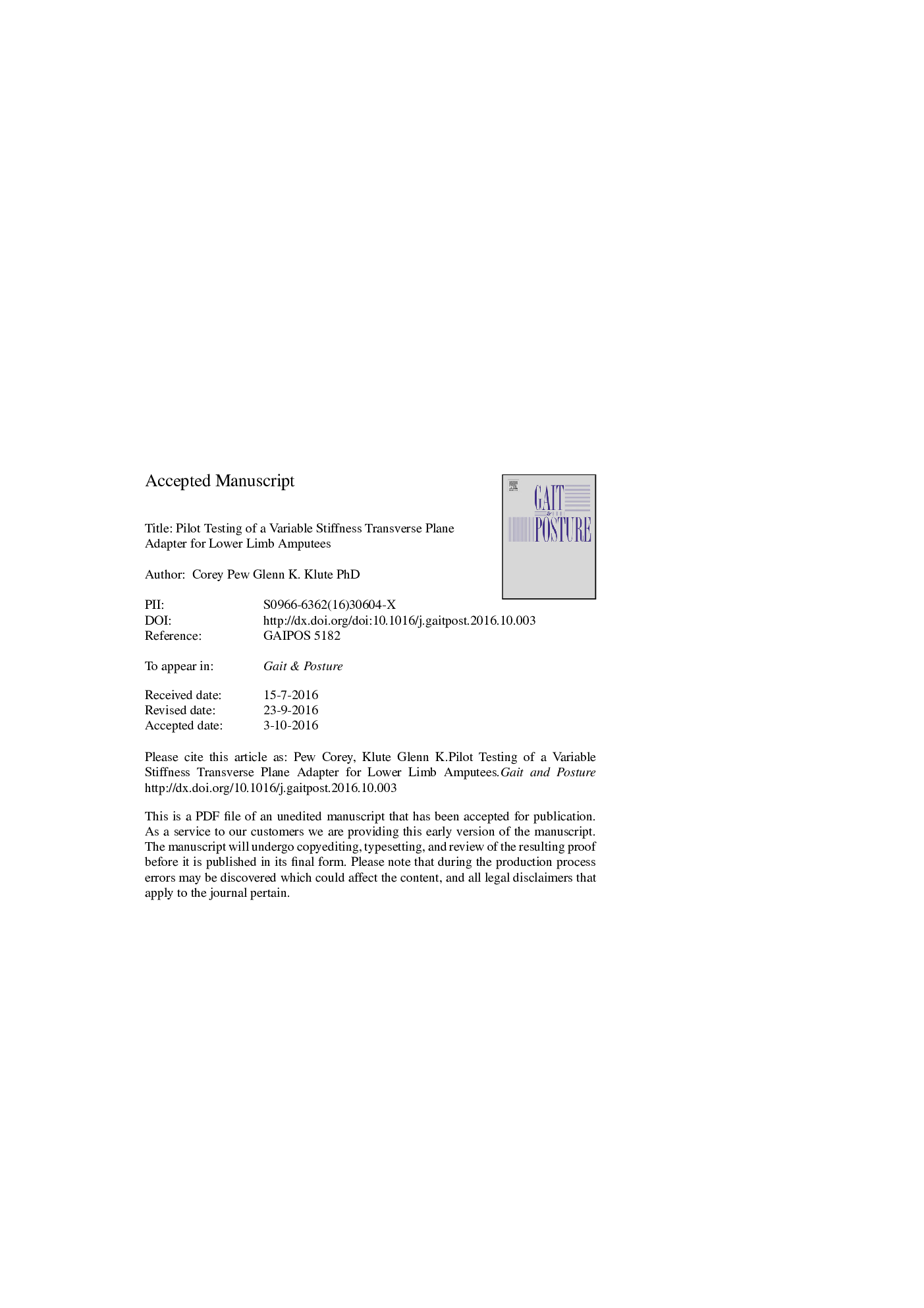| Article ID | Journal | Published Year | Pages | File Type |
|---|---|---|---|---|
| 8798708 | Gait & Posture | 2017 | 19 Pages |
Abstract
Amputees often experience soft tissue breakdown and discomfort from the high transverse plane shear stresses between the residual limb and prosthesis. To evaluate the effects of varying the transverse plane stiffness, a small sample population of lower limb amputees wore a novel variable stiffness torsion adapter (VSTA). Peak transverse plane moments were evaluated for three fixed stiffness levels (compliant: 0.30 Nm/°, intermediate: 0.57 Nm/°, stiff: 0.91 Nm/°) while participants traversed five tasks of daily living that emphasize transverse plane motion including: straight walking for reference, 90° turns, 180° turns, a static reach test, and the L-Test of functional mobility. Results indicated that activities requiring high levels of transverse plane motion (90° and 180° turns) had significantly reduced peak transverse plane moments when walking with the compliant transverse plane stiffness as compared to the stiff setting. Additionally, use of the VSTA resulted in no measurable loss of mobility at self-selected walking speeds between the three settings. These preliminary results indicate that a transverse rotation adapter with variable stiffness capability could be useful for a lower limb amputee to help reduce stresses at the socket-limb interface that result in soft tissue breakdown and discomfort.
Related Topics
Health Sciences
Medicine and Dentistry
Orthopedics, Sports Medicine and Rehabilitation
Authors
Corey Pew, Glenn K. PhD,
